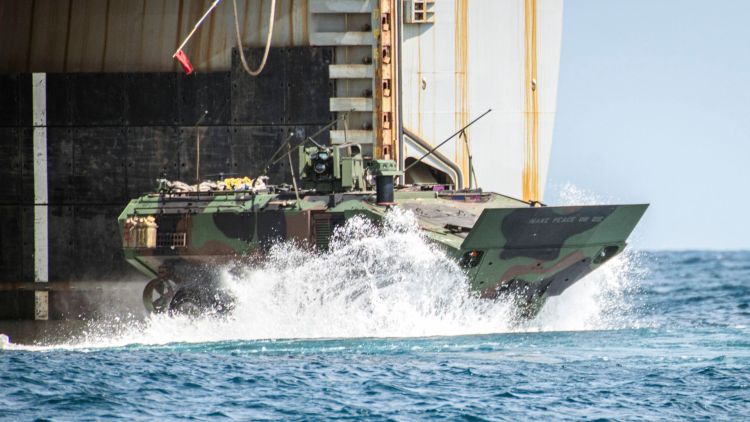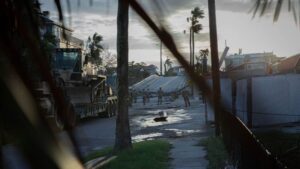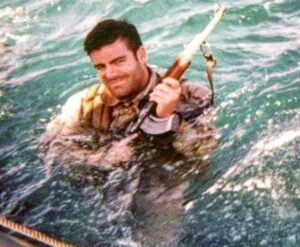The United States and South Korea have long shared a strong military partnership, and every year, they step up their game with joint military exercises designed to ensure their forces are always ready for anything.
This year’s Exercise Ssang Yong 24 took things to a whole new level, marking a significant leap in amphibious warfare preparedness.
With new technology, complex operations, and enhanced cooperation between forces, it was clear that this exercise wasn’t just another run-of-the-mill drill. It showcased modern warfare at its best.
Let’s break down how the debut of the Amphibious Combat Vehicle (ACV) and combined joint operations brought the US and South Korea closer to being fully prepared for future regional conflicts.
The Role of Amphibious Combat Vehicles in Modern Warfare
First up are the ACVs, a cutting-edge machine that’s been years in the making.
After some initial hiccups—like rollovers in rough surf zones a few years ago—the ACV has been refined and is now ready to play a key role in the future of amphibious operations.
Exercise Ssang Yong 24 was the perfect place to showcase what this vehicle is capable of, marking the first time the ACV was deployed on the Korean Peninsula.
Replacing the decades-old Assault Amphibious Vehicle (AAV)—which has been in service since the early 70s—the ACV is designed to give the US Marine Corps the speed, firepower, and safety upgrades needed for modern amphibious warfare.
The Marine Corps highlighted that the ACV is designed to “provide organic, direct fire support to dismounted infantry in the attacks.”
And, as of the present, there are four different versions in the works: the ACV-P (for personnel), ACV-C (for command-and-control), ACV-R (for recovery), and the ACV-30, which packs a 30-mm gun. The ACV-P can hold a crew of three, along with 13 Marines, and enough gear and supplies to last two days in combat.
A US Marine Corps Amphibious Combat Vehicle conducts a ship-to-shore transit during an amphibious assault rehearsal as a part of exercise Ssang Yong 24, September 1, 2024. (DVIDS)
During the exercise, it became clear that the ACV is a crucial part of the Marines’ strategy, allowing them to land quickly and safely in hostile environments, even with tricky beach conditions.
The service is counting on this vehicle to help them dominate future battles.
Enhancing Interoperability Between US, ROK, and Allied Forces
One of the most exciting things about this year’s exercise was the first deployment of a combined US-ROK battle staff, working together to command amphibious operations from a South Korean vessel, the ROKS Marado and Dokdo (LPH-6111).
ROK, or Republic of Korea, is the official name of South Korea.
It might sound like just another military maneuver, but this kind of cooperation is a big deal.
Having both American and South Korean forces working hand in hand at the command level shows just how well these two allies can coordinate under pressure.
“Rehearsing this kind of combined joint forcible entry training with an amphibious landing, then follow-on operations, is very important because of how complex they are,” USMC Lt. Col. Gabriel Tiggs, executive officer of the 31st Marine Expeditionary Unit, said in a statement.
In addition to the US and South Korean forces, the United Kingdom Commando Force also participated, marking its second consecutive year in the exercise.
This growing collaboration between multiple allied nations adds another layer of complexity, strengthening military ties and ensuring that all forces are better prepared to work together when it really counts.
“The defense of the Korean Peninsula depends on our ROK-US forces to continuously work together, shoulder-to-shoulder, including this Ssang Yong and into the future,” Tiggs added.
And what makes Exercise Ssang Yong 24 stand out is how multi-dimensional it is.
Held regularly since 2012, this year’s joint exercise wasn’t just about storming beaches—it involved air, sea, and land forces working in harmony.
The exercise featured real-time intelligence gathered by South Korean drones, US F-35B fighter jets providing close air support, and reconnaissance forces from both the US and South Korea infiltrating key areas.
All of this was part of a simulated large-scale assault designed to mimic a real-world conflict scenario.
The US Amphibious Combat Vehicle and South Korea’s Korean Assault Amphibious Vehicle were central to the amphibious assault, with Marines hitting the beaches in a coordinated effort that also included naval landing crafts and helicopters swooping in to support ground operations.
Addressing Regional Security Challenges
Zooming in, there’s a strategic message here that can’t be ignored. These exercises are as much about preparing for potential conflicts as they are about sending a signal to regional adversaries like North Korea and China.
The Korean Peninsula is a hotspot for tension, and the ability to conduct joint amphibious operations sends a clear message—these forces are ready to respond to threats swiftly and decisively.
By rehearsing such complex joint operations, the US and South Korea are ensuring that they’re not just ready for small skirmishes but for larger, more challenging conflicts.
It’s a reminder to any adversary that these two allies have each other’s backs, and they’ve got the military power to prove it.
Post-Deployment Evaluation of Amphibious Combat Vehicles
The debut of the ACV during Exercise Ssang Yong 24 was a significant milestone for the program, especially considering the vehicle’s rocky history.
After two ACV rollovers in the surf zone last year, the Marine Corps temporarily halted all waterborne operations for the vehicle.
These incidents, which occurred in July and October 2023, raised serious concerns about the vehicle’s ability to safely operate in rough water conditions.
While the ban on ACV operations in the surf zone is still in effect, the vehicle’s appearance during Ssang Yong, under tightly controlled conditions, signals cautious progress.
As mentioned, the ACV is meant to replace the aging AAV, which was taken out of service after a tragic sinking incident in 2021.
General Eric Smith, the assistant commandant of the Marine Corps, acknowledged last April the challenges the ACV program has faced, including mechanical issues and training mishaps.
However, he emphasized that the Marine Corps is working closely with industry partners to resolve these problems.
The introduction of a Transition Training Unit has been pivotal in ensuring that ACV operators are better prepared to handle the vehicle, especially in tricky environments like the surf zone.
The ACV’s participation in this high-profile exercise demonstrated that, while the program has faced setbacks, efforts are underway to get it back on track, with a focus on safety and reliability moving forward.
Closing Thoughts
You and I can most likely agree that Exercise Ssang Yong 24 wasn’t just a practice run—it was a clear demonstration of modern amphibious warfare at its best.
From the debut of the Amphibious Combat Vehicle to the complex, multi-dimensional operations conducted by US, South Korean, and UK forces, this exercise showed how far amphibious capabilities have come.
The seamless coordination between the US and South Korean forces, especially at the command level, proves that these two allies are ready for anything. As tensions continue to simmer in the region, this kind of preparation is more important than ever.
And with the US Marine Corps looking to refine and improve its equipment and tactics, future exercises will only continue to enhance the strength of this critical alliance.
—
Disclaimer: SOFREP utilizes AI for image generation and article research. Occasionally, it’s like handing a chimpanzee the keys to your liquor cabinet. It’s not always perfect and if a mistake is made, we own up to it full stop. In a world where information comes at us in tidal waves, it is an important tool that helps us sift through the brass for live rounds.



